
Lot 35
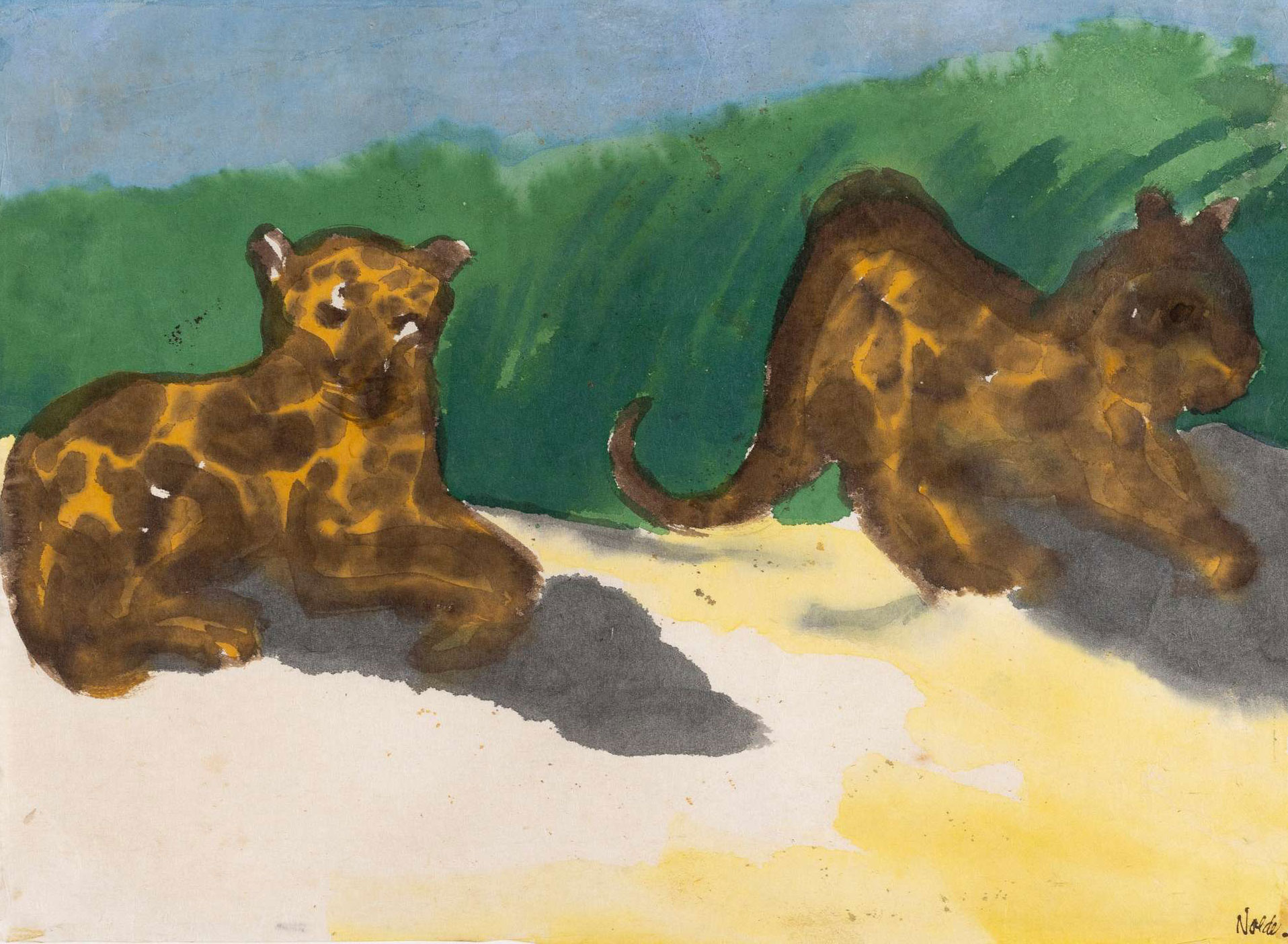
EMIL NOLDE (DANISH/GERMAN 1867-1956) §
ZWEI JUNGE LÖWEN [TWO LION CUBS], 1920s
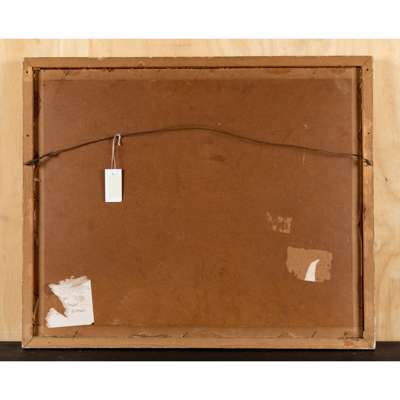
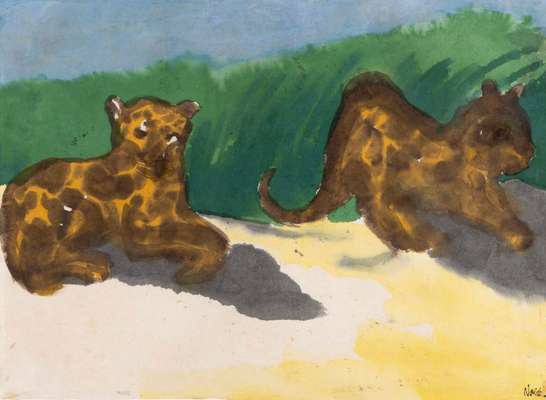
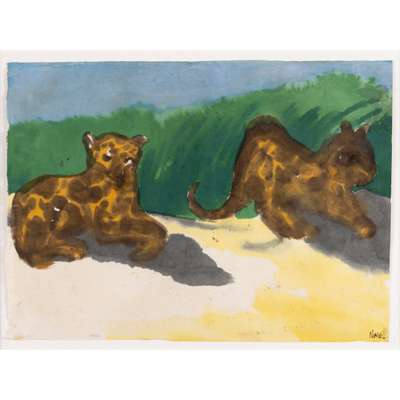
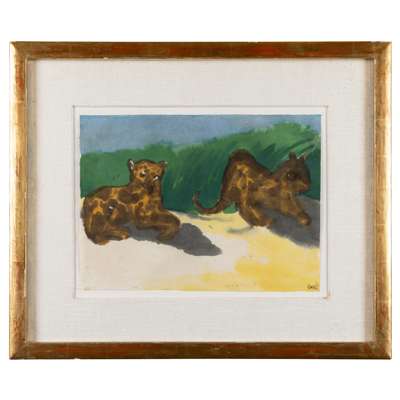



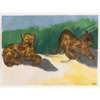
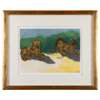
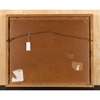
Auction: The Gillian Raffles Collection Evening - Lots 1 to 73 - Thursday 01 May at 18:00
Description
signed (lower right), inscribed 1935 120 in another hand in pencil (to reverse) and stamped in green MADE IN GERMANY (to reverse), watercolour on paper
Dimensions
34.5cm x 47cm (13 5/8in x 18 ½in)
Provenance
Curt Valentin, New York;
with Frankfurter Kunstkabinett Hanna Bekker Vom Rath GMBH Gallerie, Frankfurt, 1969, from whom acquired by Gillian Raffles;
The Collection of Gillian Raffles.
Footnote
The Scholarly Advisory Board of Stiftung Seebüll Ada und Emil Nolde has confirmed the inclusion of the work in a future catalog raisonné of the watercolors and drawings by Emil Nolde (1867–1956), Registration No: Fr.A.3266.
In 1906, at the age of forty, Emil Nolde was invited by his friend Karl Schmidt-Rottluff to join Ernst-Ludwig Kirchner’s laboratory of modernism, Die Brücke. Nolde’s association with the group only lasted a year but the experience was to have profound effect on his art, not least his total embrace of the idea of ‘modernist primitivism,’ modern art’s obsession with the art of ‘outsiders’ as the means to access a deeper visual and cultural ‘truth.’ Nolde had moved to Berlin in 1902 to find himself as a modern artist, experimenting with all the available modalities of the time – Impressionism, Post-Impressionism and Symbolism. But his encounter with Schmidt-Rottluff, Kirchner et.al. saw him emerge as a fully-fledged Expressionist, a painter of the city’s underbelly, of ‘otherness’ and dislocation, his existentialist subject-matter given ‘expression’ in a raw, jagged style of painting, with strong linear outlines, unsophisticated brushwork and a bright, other-worldly palette.
It’s Nolde’s use of colour that sets him apart from his contemporaries – perhaps with the exception of Kandinsky, with whom he exhibited in Der Blaue Reiter group shows in Munich. For Nolde, the motif is merely the starting point for a sensuous layering of colours. Throughout his career he used watercolour to this effect, enjoying the liquidity of the medium, especially the ability to blur the boundaries between each field of colour. We see this most, of course, in his later ‘Unpainted Pictures’ of the 1940s, when, deemed ‘Degenerate’ by the Nazi regime, Nolde was forced to work in secret, having been denied the use of paints and canvas.
Zwei Junge Löwen (Two Lion Cubs) most likely dates from the early 1920s, from a series of works painted in Berlin’s zoo. Zoos, fairgrounds, cabarets, theatres were all interlinked sites of enquiry for the Expressionists, spaces that sat within the city but somehow outside of its conventions – as did the great ethnographical collections of Berlin’s Völkerkundermuseum, where Nolde spent hours copying the art of non-European peoples. In Zwei Junge Löwen (Two Lion Cubs )we see this influence, as well as a little of Gauguin’s transliteration of Tahitian art. Nolde is not aiming for a ‘lifelike’ representation, rather something more symbolic. The artist is liberated from re-presenting the surface of things, aiming instead for the essence beneath. As Nolde himself wrote in a 1948 article in Der Spiegel: ‘The painter does not need to know much; it is wonderful when he can paint, under instinctive guidance, the way he breathes, the way he walks.’ [quoted in eds Osterwold, Tilman & Thomas Knubben, Emil Nolde - Unpainted Pictures, Hatje Cantz, 2000, p.17]
A number of Nolde’s zoo studies from 1923-24 – Gnu, Giant Tuka, Chameleons – were exhibited in London in 1968, in an Arts Council exhibition of watercolours from the Nolde Foundation in Seebüll, held at the Hayward Gallery. It is tantalising to think that Gillian Raffles saw this exhibition – as an inveterate gallery-goer, it is more than likely she did – and that this was inspiration for her acquiring Zwei Junge Löwen (Two Lion Cubs) – in which she would, of course, have seen parallels to the London Zoo drawings of one of her favourite artists, Henri Gaudier-Brzeska.










